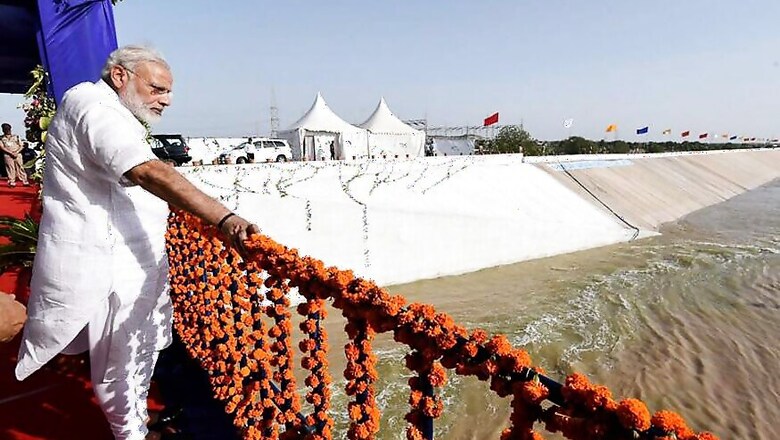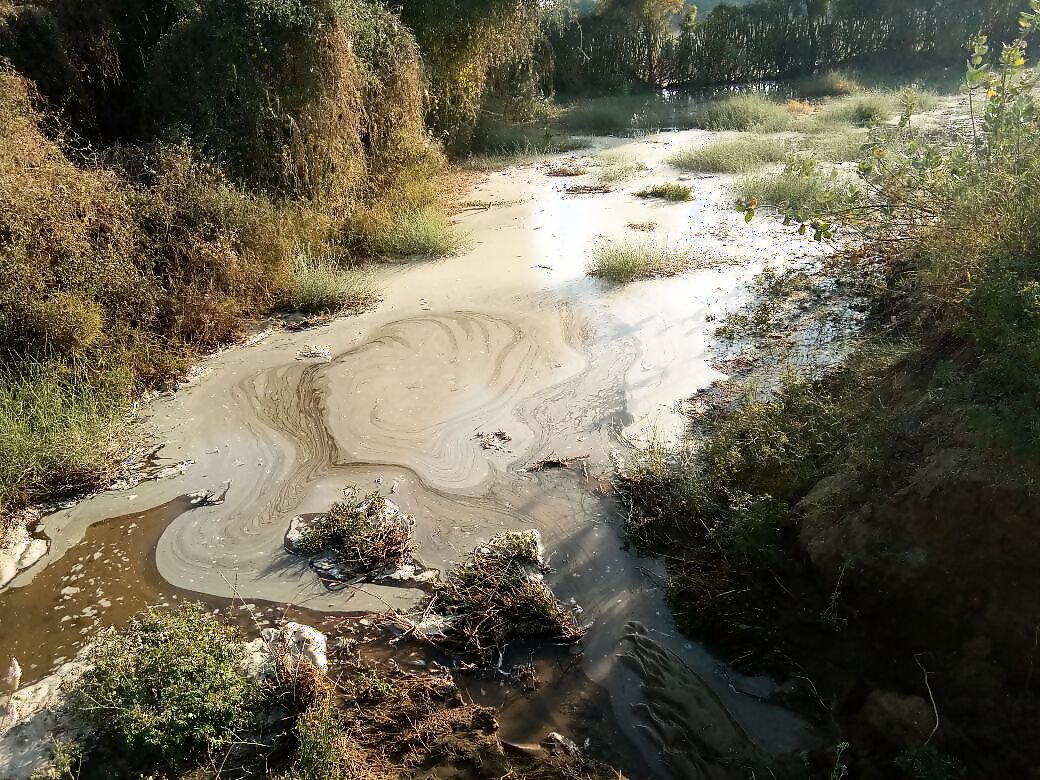
views
Ahmedabad: Two months after the Sardar Sarovar dam was inaugurated, Gujarat is facing a severe water crisis with the recorded level of its reservoir at the lowest in several years.
The Sardar Sarovar dam on the Narmada River was inaugurated just ahead of the Gujarat Assembly elections in December 2017, by Prime Minister Narendra Modi.
Every election rally that followed, including the ones that PM Modi addressed, were filled with speeches how the Narmada project had drastically changed the lives of people in Gujarat and how Gujarat’s “lifeline” had ushered in prosperity for everyone.
A little over a month after the Gujarat assembly results, the state is now staring at a severe water crisis.
The water level in the Sardar Sarovar Dam reservoir is lowest in several years despite heavy rainfall in Gujarat last monsoon. In figures, the amount of water in the reservoir is 50 percent of the average water in the dam in the past 15 years.

And the government has announced that not a single drop of Narmada water will be available for irrigation this coming summer.
Speaking at a function in Ahmedabad on February 2, Chief Minister Vijay Rupani asked farmers not to sow summer crops. “The water level in the Narmada dam is low because of reduced inflow. The state government has to provide water for drinking purposes and that is the priority. Farmers should not sow crops this summer because Narmada water will not be available for irrigation,” he said.
Prior to the CM’s announcement, chief secretary J N Singh and Sardar Sarovar Narmada Nigam Limited (SSNNL) CMD S S Rathore said that there would be a water cut for industries and cities this summer. The Sardar Sarovar Reservoir Regulation Committee (SSRRC) met on January 10 and decided to allot 4.7 million acre feet (MAF) of water to Gujarat instead of nine million MAF last year, Singh said.
“Accordingly, there will be a cut of water supplied to industries and other sources,” the chief secretary stated. SSNNL CMD, who accompanied the chief secretary for the media briefing, said, “The Gujarat government is not bound to supply water for summer crops, but we have been doing so in the previous years because we had been receiving excess water.”
According to sources, SSNNL, the state government organization that is responsible for managing water in the dam and the canal network, had got a whiff of this impending crisis by the end of the monsoon season last year itself. Deficient rainfall in catchment areas of the Narmada in Madhya Pradesh meant that the inflow in the dam had reduced considerably. But with elections around the corner, the government perhaps could not afford to make this public even as surveys showed that the BJP was slipping further in rural areas of the state.
According to the water sharing agreement between various beneficiary states, Gujarat received nine million acre feet (MAF) of water last year, but with the catchment areas of the river (in and around Burhanpur in Madhya Pradesh) receiving scanty rainfall last monsoon, the share that Gujarat has received this year is just about half at 4.7 MAF.
On December 1, 2017, the level of water at the Narmada dam stood at 124.02 metres, while it reduced to 112.22 metres in the span of two months on February 2 this year. As of Friday, the level of water at the Narmada dam site stood at 111.65 metres, while the minimum permissible level of water at the dam is 110.64 metres. This means that as of today, there is just one metre of water that can be used from the reservoir. Indeed, a scary proposition.
Sagar Rabari, President of the Gujarat Khedut Mandal, an umbrella body of farmers across the state, told News18 – “The present situation is purely man made. And what makes it worse is that water was wasted by this government before the elections just to garner votes. The release of Narmada water into the Aji Dam in Saurashtra, and then further downstream was nothing more than sheer wastage of water even as the Narmada reservoir had received very less rainfall.”
Rabari will embark on a padyatra from Monday to galvanise about 5.5 lakh farmers across Saurashtra and North Gujarat. “I will first do a padyatra along the Maliya branch canal and then do a padyatra along the North Gujarat sub canal network. It is only because of mismanagement of water resources that farmers will not get water for irrigation after March 15.
To make matters worse, there have been instances of breach in the secondary and tertiary canals of the Narmada canal network, resulting in wastage of millions of litres of water. Earlier this week, the sides of a sub canal in North Gujarat’s Banaskantha district gave way, resulting in wastage of several million litres of water, which spread into nearby fields. On Friday, a sub canal in Chhota Udepur in Central Gujarat also developed a breach, resulting in wastage of water for several hours before the canal was repaired by the SSNNL.
Meanwhile, the government has now posted police and SRP along the main Narmada canal and sub canals to prevent farmers from stealing water. While farmers are allowed to legally draw water until March 15 from the canal network by paying a nominal fee, there are several farmers who attempt to draw water without permission from the canal network. SSNNL officials, accompanied by cops, have been cutting such illegal connections for the past one week.
The Congress meanwhile, is looking to score brownie points over the water crisis. Speaking to News18, party spokesperson Dr Manish Doshi said - "The Sardar Sarovar project was inaugurated by the PM just ahead of the elections purely for political gains. The BJP used this to campaign for the election. And now that the elections are over, the state is staring at a water crisis. This has already reflected in the just concluded gram panchayat elections and the farmers will vote against the BJP in the forthcoming district panchayat, taluka panchayat and municipalities elections as well."



















Comments
0 comment